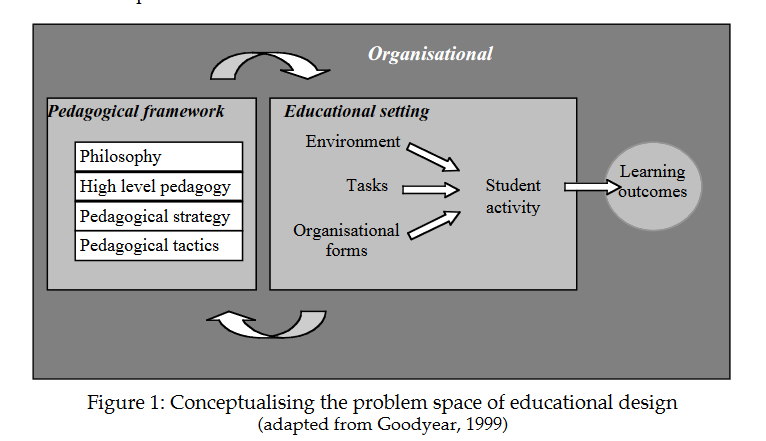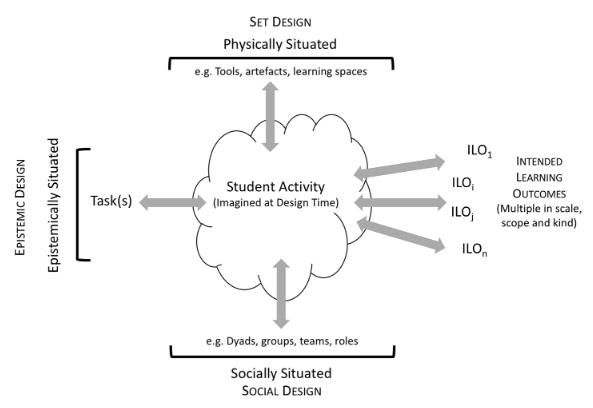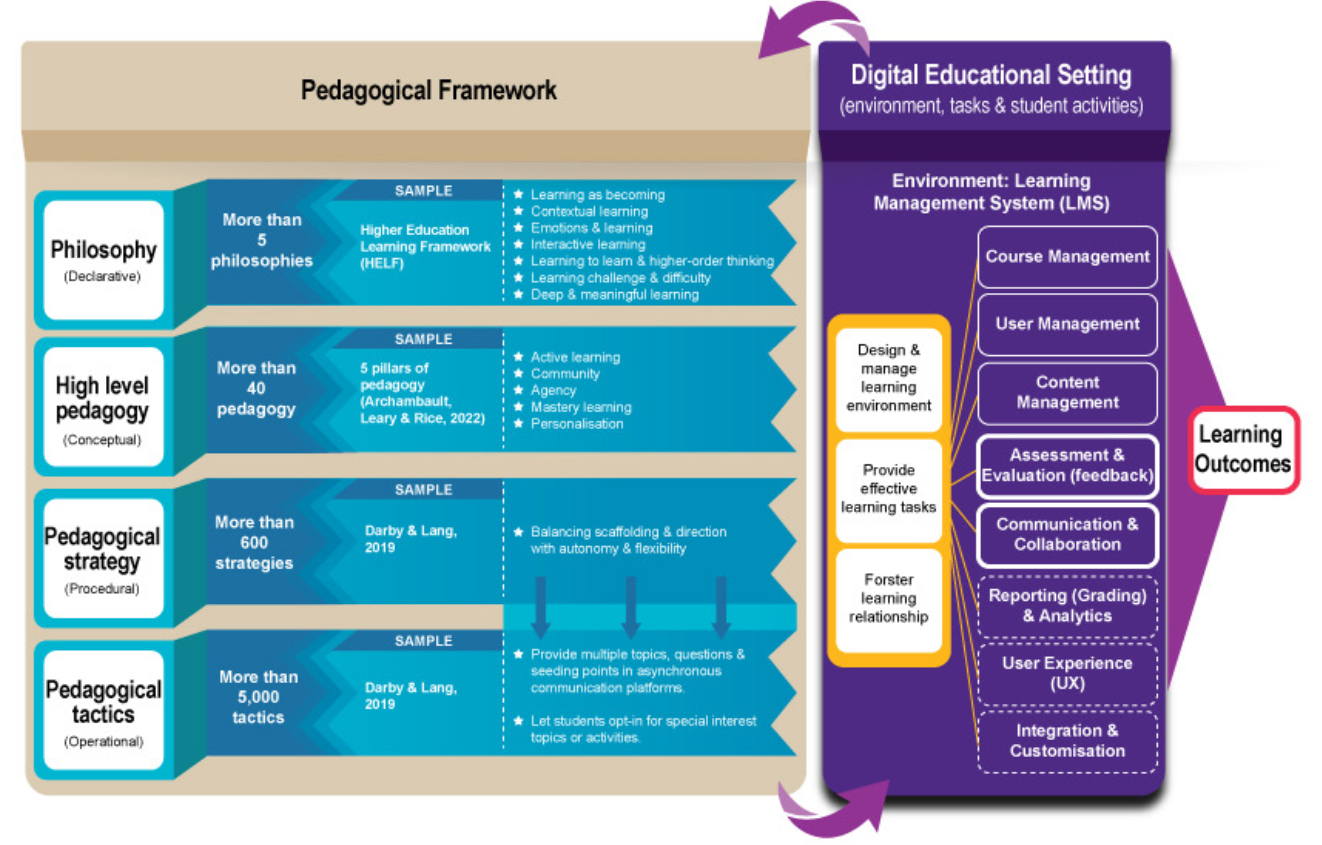Teaching as gathering, weaving, and augmenting
See also: teaching, my-teaching-philosophy, teaching-as-interweaving, gatherers-weavers-augmenters
Intended to be a conceptualisation of the act, art, and science of teaching. A conceptualisation emerging out of my experience, reading and reflection and which provides a foundation for future practice.
Origins#
Conceptualising the problem space of educational design#
It starts with Goodyear's (2005) work conceptualising educational design as informed by a pedagogical framework and an educational setting.
Conceptualising the educational setting as activity centered analysis and design#
It's apparent that Goodyear's conceptualisation of the educational setting evolved into Activity-Centered Analysis and Design which is a "meta-theoretical framework for understanding and improving local, complex learning situations" (Goodyear, Carvalho & Yeoman, 2021). Goodyear et al (2021) provide two views of ACAD. One at the time of design and the other at the time of learning. Emphasising the point that we can't design learning, we can only design for learning. See the evolution-of-design-for-learning for more.
Adapting those conceptualisations for IT procurement#
Lodge et al (2023) started work using Goodyear's (2005) conceptualisation of the educational setting to inform the procurement of digital technologies for learning and teaching. Among the changes is the addition of details of different digital technology functions that are required to implement a learning situation.
Positioning gathering, weaving, and augmenting within those conceptualisations#
At the same conference some colleagues and I were presenting on gathers-weavers-augmenters (Jones, Cook & Booten, 2023). Work we were doing during a LMS migration as learning designers helping migrate the set design (Blackboard Learn) of learning tasks to a different set design (Canvas) in large numbers. Watching Jason's talk and discussions with one of his co-authors led to a nascent attempts to refine conceptions of educational design and the following image.
The initial changes to the Lodge figure above include (not without their problems):
- Adding the labels of kinds of work (Goodyear's original inputs to student activity) and doing the work (echoes of Lodge's list of IT functions used to implement/do the work of those inputs)
- Expansion of Lodge's list of doing the work to include types of resource that's not necessarily done by IT (e.g. content knowledge and lots more left unsaid)
-
Reintroducing Goodyear's student activity as part of the educational setting.
Though perhaps there should be some distinction between design (learning task) and learn time (learning activity)?
-
Finally, the addition of Gather & weave (integration & customisation) stage.
The intent being to make explicit what appeared to be missing from this conceptualisation. The work of weaving together the physical, social, and epistemic inputs into the learning task which then informs the learning activity.
Teaching as gather, weave and augment#
The intent is to position the act of teaching - see Goodyear's (2015) idea of teaching as design - as the gathering, weaving, and augmenting of the various inputs to design learning tasks which form the "space" within which learning activity emerges.
References#
Goodyear, P. (2005). Educational design and networked learning: Patterns, pattern languages and design practice. Australasian Journal of Educational Technology, 21(1). https://doi.org/10.14742/ajet.1344
Goodyear, P. (2015). Teaching As Design. HERDSA Review of Higher Education, 2, 27--50.
Goodyear, P., Carvalho, L., & Yeoman, P. (2021). Activity-Centred Analysis and Design (ACAD): Core purposes, distinctive qualities and current developments. Educational Technology Research and Development. https://doi.org/10.1007/s11423-020-09926-7
Jones, D., Cook, H., Booten, S. (2023). Gatherers, Weavers, and Augmenters: Three principles for dynamic and sustainable delivery of quality learning and teaching. THETA 2023 Brisbane, April 2023.
Lodge, J. (n.d.). Evidence-informed IT planning, procurement, and evaluation in higher education. THETA'2023, Brisbane, Australia. https://caudit.edu.au/resources/evidence-informed-it-planning-procurement-and-evaluation-in-higher-education/




